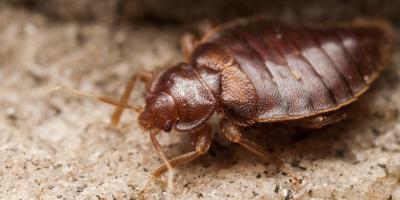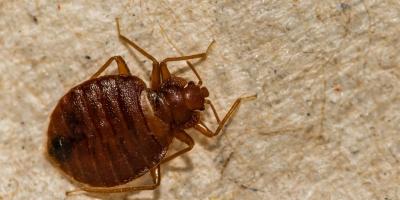Bed Bugs = Bad Souvenirs

Many New Englanders returning from vacation this year will end up bringing back more than just souvenirs, sunburns and credit card debt. Whether you mean to or not (and no one does), you might also be transporting bed bugs back from your summertime trip.
True Travel Bugs
Bed bugs have a remarkable ability to adapt to a variety of environments, which makes them particularly well suited for travel. They can latch onto suitcases, stow away in backpacks, and even make your pocketbook into their own first-class cabin. Summertime is prime relocation season for bed bugs, with its seasonal uptick in vacations, home relocations and college students returning from and moving back into the dorms.
And don’t think you can buy your way out of a bedbug problem, either—bed bugs are just as likely to turn up in a five-star resort as a fifth-rate motel. As one expert put it, “they don’t discriminate.”
Bed bugs are often misidentified as altogether different pests. A majority of pest control professionals report being called out to treat flea or cockroach infestations that often turn out to be bed bugs. That’s why it’s important to know what you’re looking for both in and out of the home.
Be a Vigilant Vacationer
When staying in lodgings outside your home--including hotels, motels, bed and breakfasts and AirBNBs--the first thing you should do upon entering your room is a big fat nothing. In other words, don’t even start to unpack until you’ve searched the room for bed bugs. A smart strategy is to store your suitcase and bags in the bathtub until you’ve thoroughly inspected the room.
The first place you want to look is, unsurprisingly, the bed. Keep in mind before you begin that bed bugs prefer the dark and will seek out the darkest corner of the bed. Start by checking the corner furthest from windows and other light sources. Bed bugs like to nest in the corners, especially in the folds of tucked-in sheets. Search the bed in layers, first peeling back the comforter, eventually taking the sheets off completely. Check the mattress seams, especially in areas where the stitching may be frayed. Finally, check the frame, behind the headboard and nightstands.
What you’re looking for is not just little insects, but also diamond-shaped, black or rusty red stains that could be spots of blood excrement. While they’re typically large enough to easily spot with the human eye (about the size of a dot from a marker), they will naturally be easier to spot in areas of larger infestation and will often be found in clusters.
Even if the bed is clear, your search isn’t over yet. Check any cushioned seats, especially in the creases and folds. Check any drapes or curtains, and the carpet around the baseboards.
If you do discover any of the telltale signs of a bedbug infestation, immediately remove yourselves and all your belongings and contact the front desk for a room change, preferably one not in immediate proximity to the room you just came from. (Pro tip: the hotel staff will often go above and beyond to make up for this kind of misfortune, and bed bugs can turn up anywhere. Rather than pointing fingers, remember that respect must be given before it can be reciprocated. Kindly communicate the issue so they know how to fix it, and any hotel should graciously serve you well for your trouble and grace).
Although awareness is your best defense against tracking bed bugs home, despite your best efforts, there is always a chance that you may end up bringing a few of the unwanted critters back with you. Bed bugs could be nested in many places besides your hotel room, including even your airplane seats.
Back to Reality
After returning home, wash all your vacation clothes as soon as possible—especially the outfits you wore on your return trip--and make sure to dry them on as hot a heat as the care instructions will allow. If you want to take an extra step of precaution, put your clothes in the dryer for 10-15 minutes before even washing them. Inspect your luggage carefully and, if you want to take the greatest precaution, spray your baggage inside and out with a disinfectant spray and leave the bag outside for a few days to give any potential hitchikers a chance to move elsewhere before bringing your bag back inside.
Now that you’re home and have mastered the art of searching for bed bugs, it might not be a bad idea to give your home’s bedrooms a similar once-over. Or better yet, use your own home as practice before your trip. After all, the last thing you want is to be the one who drags bed bugs to your travel destination, spreading them to all the other vacationers.
Want more tips on how to stay bedbug-free this season? Check out our bed bug page for more information and helpful hints.



